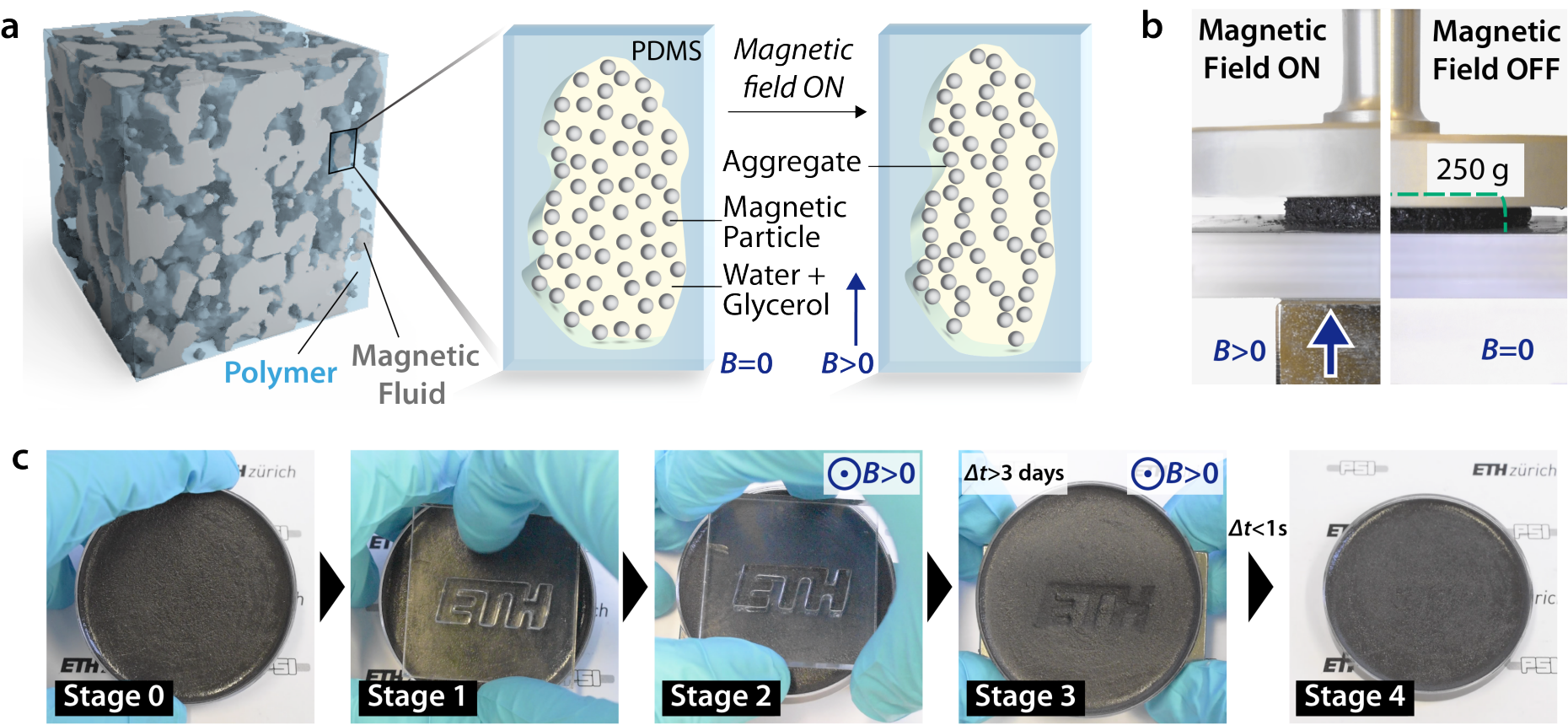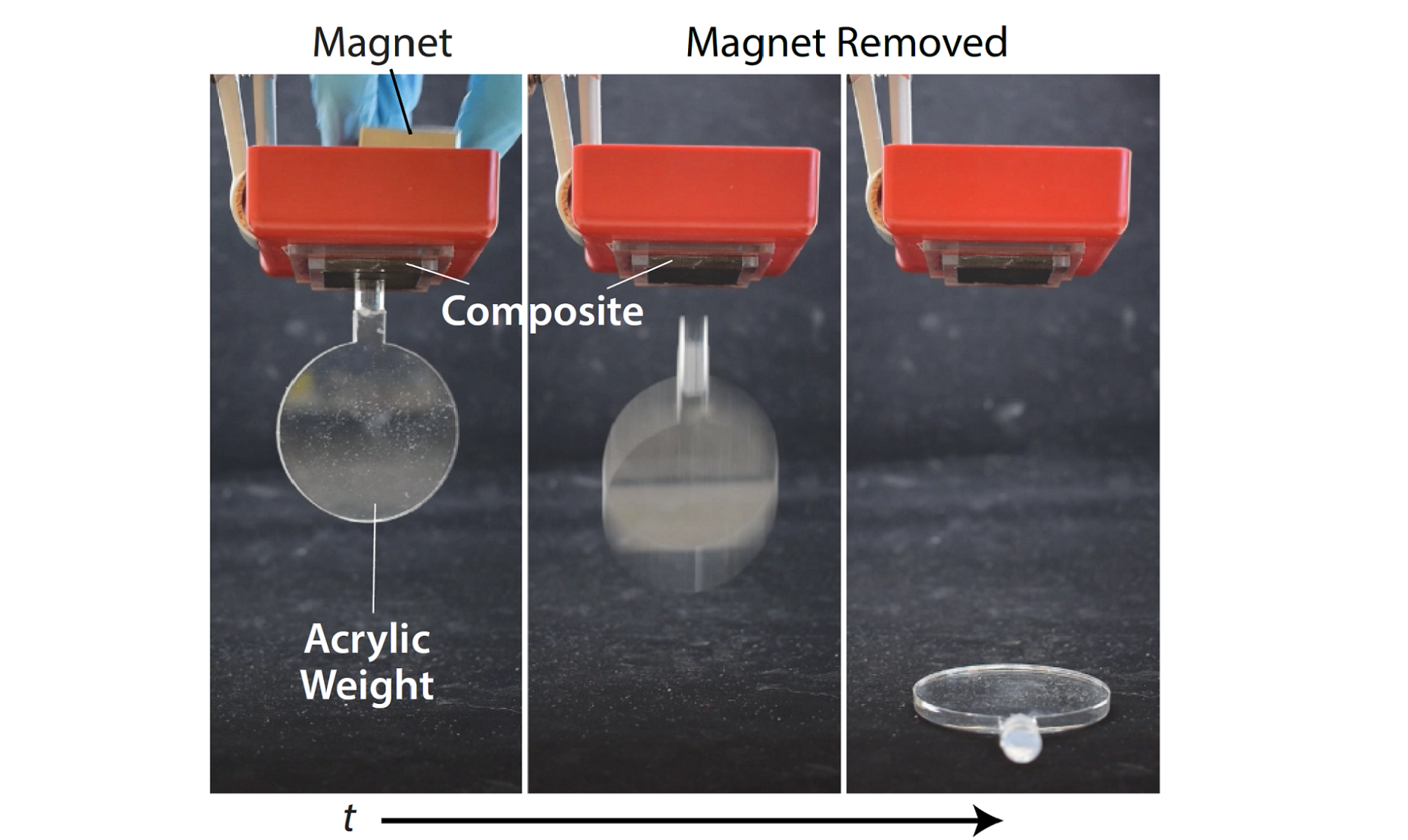Magneto-mechanical composites
When micrometer-size magnetic particles are suspended in a fluid, they can give a change mechanical properties of several orders of magnitude when the fluid is subjected to a magnetic field. By encasing the fluid in an elastomeric matrix, we have created a composite that not only exhibits significant modifications in the mechanical properties in a magnetic field but also magnetic shape-memory [1] and switchable adhesion [2].
We have designed a material that displays magnetically addressable shape-memory and switchable adhesion by dispersing droplets of a commercial magneto‐rheological fluid in a crosslinked poly(dimethylsiloxane) (PDMS) matrix, shown schematically in Figure 1a. The composite can undergo substantial stiffening when subjected to a magnetic field, with an exceptional increase in storage modulus of approximatively thirty times at a field of 600 mT (Figure 1b). For magnetically addressable shape‐memory, the PDMS matrix acts as the stable phase and the magnetic fluid as the programmable phase and an applied deformation can be programmed in the composite through the application of a magnetic field (Figure 1c). The composite relaxes back to its original form in less than one second when the magnetic field is released.

The fact that the shape‐memory mechanism shown by this material requires no heat, in conjunction with recent advances in magnetic control systems, opens up new possibilities for applications such as biomedical and wearable devices, which are operated in heat‐sensitive environments. For example, catheters that are pushed through blood vessels to the surgical site in the body during minimally invasive operations could change their stiffness. This has the advantage that they only have to solidify when needed and therefore produce fewer side effects such as thrombosis – for example when sliding through a blood vessel. Based on a straightforward emulsion process, this material composite can not only be extended to different classes of polymer matrices and active fluids, but can also be manufactured with a wide range of methods, including casting, injection molding, and additive manufacturing.
The same material also exhibits magnetically switchable adhesion. When subjected to a magnetic field of 250 mT, the magneto-rheological fluid develops a yield stress, which dramatically enhances the composite's adhesive properties, resulting in a nine-fold increase of the pull-off force. A demonstration of this effect is shown in Figure 2. This surprising effect could extend the use of adhesives to new applications requiring actuation of adhesive forces, such as soft robotic grippers and actuators, climbing robots, and medical or wearable devices.

References
- Magnetically Addressable Shape‐Memory and Stiffening in a Composite Elastomer
P. Testa, R. W. Style, J. Cui, C. Donnelly, E. Borisova, P. M. Derlet, E. R. Dufresne and L. J. Heyderman, external page Adv. Mater. 2019, 31, 1900561.
Additional links: external page Cover Image - Switchable adhesion of soft composites induced by a magnetic field
P. Testa, B. Chappuis, S. Kistler, R. W. Style, L. J. Heyderman and E. R. Dufresne, external page Soft Matter 2020,16, 5806 - 5811